Body positivity takes backseat as fashion houses pick skinnier models
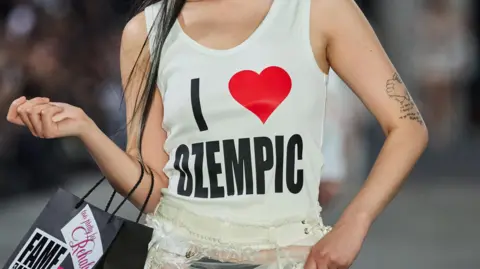 Sebastian Reuter/Getty Images
Sebastian Reuter/Getty ImagesThe high fashion industry has always been synonymous with thinness, but for a brief moment in the 2010s, the body positivity movement was at the forefront.
It promised a revolution of accepting bodies of all shapes and sizes, welcomed curves and advocated for inclusion, particularly on the runway.
But 10 years on, industry insiders tell us things have shifted. Was body positivity a flash-in-the-pan trend? And with help with weight loss medication such as Ozempic, is skinny back for good?
We speak to designers, casting agents and models at Paris Fashion Week to investigate what is happening.
The 2010s: The era of body positivity
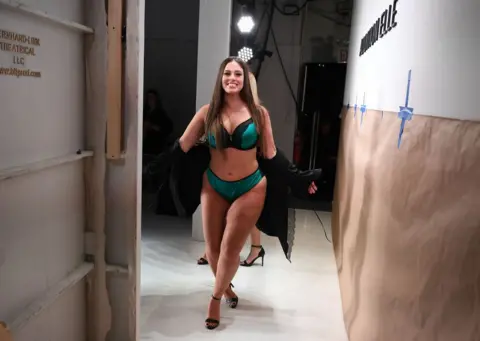 ANGELA WEISS/AFP via Getty Images
ANGELA WEISS/AFP via Getty ImagesThe body positivity movement finds its origins in the hazy days of the 1960s and was helped by icons like Marilyn Monroe who broadened Hollywood's rigid beauty standard.
It was brought to the forefront again in the 2010s, when Instagram was launched and influencers began to highlight fashion and beauty outside of the glossy magazines and runways.
Helping this was the celebrity Kardashian family, whose curves triggered BBLs (Brazilian butt lift surgery) around the world.
Enrika, a 28-year-old plus-sized model, said: "When the body positivity movement emerged, it felt incredibly empowering and liberating."
"It felt like an act of rebellion - what had always been criticised was now being appreciated. It was as if we had finally had enough of being judged."
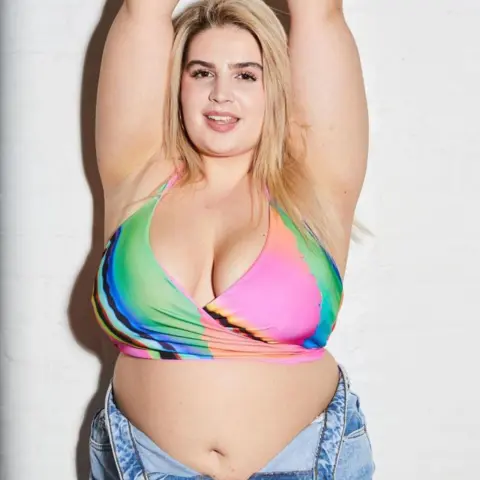 Enrika/Gingersnap Models
Enrika/Gingersnap ModelsPlus-size models were being booked for big brands, including Rihanna's highly coveted lingerie label, 'Savage x Fenty' which launched in 2018.
The brand, valued at $1bn, became known for its runway extravaganzas, reminiscent of a modern alternative to the iconic Victoria's Secret shows, but this time with every body type on display.
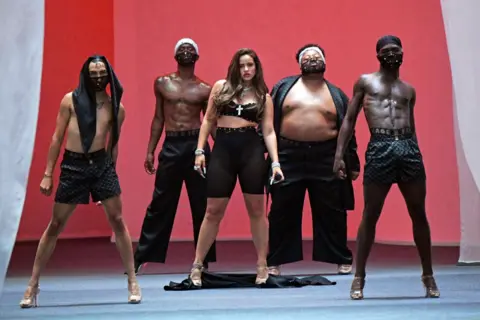 Kevin Mazur/Getty Images for Savage X Fenty Show Vol. 2 Presented by Amazon Prime Video)
Kevin Mazur/Getty Images for Savage X Fenty Show Vol. 2 Presented by Amazon Prime Video)Felicity Hayward, a 36-year-old plus-sized model, reflects on being scouted in 2011.
"When I got that call from my first modelling agency Storm - who discovered Kate Moss - I thought I was being punk'd," she said.
"Before the 2010s, attitudes around bigger bodies weren't positive and I never thought being a plus-size model was a possibility.
"Seeing that narrative change over the last decade and a half has been life changing both emotionally, physically and financially."
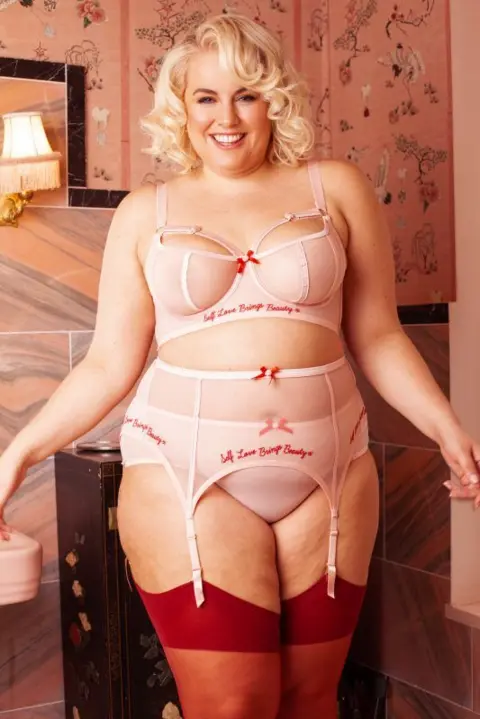 Felicity Hayward, The Milk Collective
Felicity Hayward, The Milk CollectiveThe 2020s: The era of Ozempic
But then around 2020, progress started to slow. And come the autumn and winter of 2024, of the 8,800 looks across 230 shows, just 0.8 per cent were on plus-size models, Vogue reports.
At the same time, a new weight loss drug used to treat diabetes came onto the market and skyrocketed in popularity. Semaglutide, also known as Ozempic and Wegovy, curbs the appetite of users, and was approved by the NHS for weight loss in 2023.
Celebrities including Elon Musk started crediting the drug for their newly slim frame and it was only a matter of time before that trickled down to consumers.
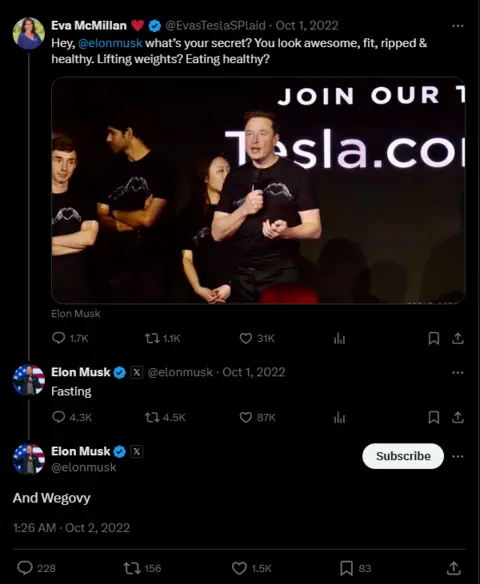 Elon Musk/Eva McMillan/X
Elon Musk/Eva McMillan/XAs Ozempic and its counterparts become more commercially available for aesthetic purposes, industry insiders claim it has affected the body positivity movement.
Model, Moya, said: "We've seen how quickly the narrative shifted, with celebrities and influencers using surgeries or medication like Ozempic to chase what's considered 'in Vogue'."
Another model, Jenny, said: "When I realised skinny was back, it was positive because I was going to get more jobs.
"But I've realised it means now I have to keep up. Now I have to be the skinniest."
Even the editorial director of British Vogue said that the fashion industry "should be concerned" by a recent trend back to using more skinny models
Chioma Nnadi told BBC Radio 4's Today programme: "I do think maybe perhaps Ozempic has something to do with it."
"We're in this moment where we're seeing the pendulum sort of swing back to skinny being 'in' and often these things are treated like a trend and we don't want them to be."
Then Berlin brand, Namilia, went viral for an "I love Ozempic" T-shirt on their 2024 Fashion Week runway.
"The 'I love Ozempic' tee really hit a nerve," laughed Nan Li, the brand's creative director who claims the T-shirt was satire.
"With the rise of Ozempic, so many people are using it. Over the last few years, celebrities just lost weight and didn't talk about it."
Paris 'celebrates elitism'
Fast-forward to January, when Men's AW25 Fashion Week lands in Paris and audiences get a litmus test in real-time of exactly where brands stand.
Aside from a selection of designers, including Rick Owens, LGN and Charles Jeffrey LOVERBOY, I can count on two hands how many plus-sized models I saw at a week of shows.
Nan Li said: "Paris celebrates elitism, and elitism means skinny and white."
"There's a handful of plus-sized models [at the shows] but they're not really plus - they're normal-sized. They are cast in every show to make the brand appear body positive."
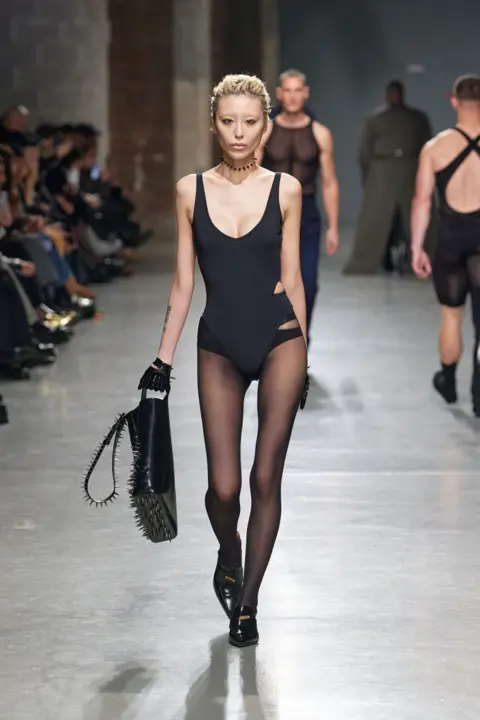 Victor Boyko/Getty Images
Victor Boyko/Getty ImagesAmidst the hustle and bustle of fashion week, Shaun Beyen, casting director for iconic French brand Fursac, told the BBC: "The only motivation for a brand is to sell clothes - that's it. I don't think we need to lie about this.
"Brands adopted body positivity in the 2010s because in part they saw it as a commercial opportunity, and when they saw it was no longer performing as they would hope in 2020, they hopped off."
Beyen added: "Full transparency - I don't really want to see clothes on someone like me. I want to see it on somebody I aspire to look like."
Gauthier Borsarello, Fursac's creative director, laughed in agreement and said: "I hate my body. I don't want to see clothes on people like me."
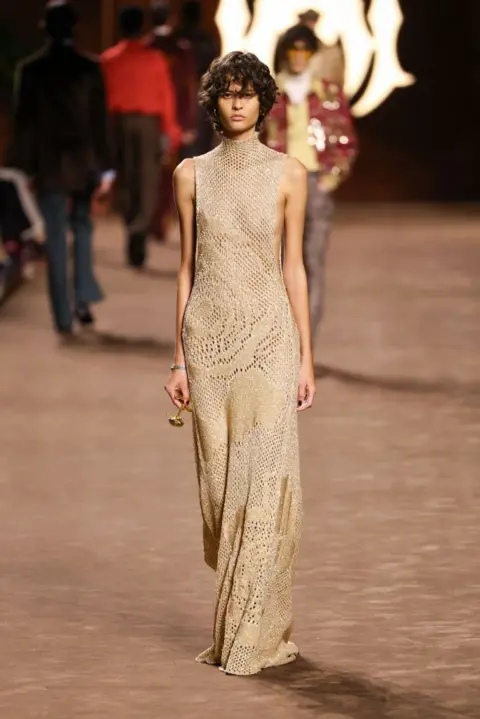 Antoine Flament/Getty Images
Antoine Flament/Getty ImagesOn the other hand, designers like Charles Jeffrey believe brands have a moral imperative to cast inclusively. "Body positivity was never a trend for me," he said. "It was an opportunity to start being responsible."
Body positivity is knitted into the very fabric of Charles' brand, which takes inspiration from the queer nightlife scene. This is readily apparent throughout his Paris Fashion Week show.
The designer explained: "The people in my shows are people I was clubbing with. It was never about models, it was my friends and their different body shapes. It was about the community I surrounded myself with."
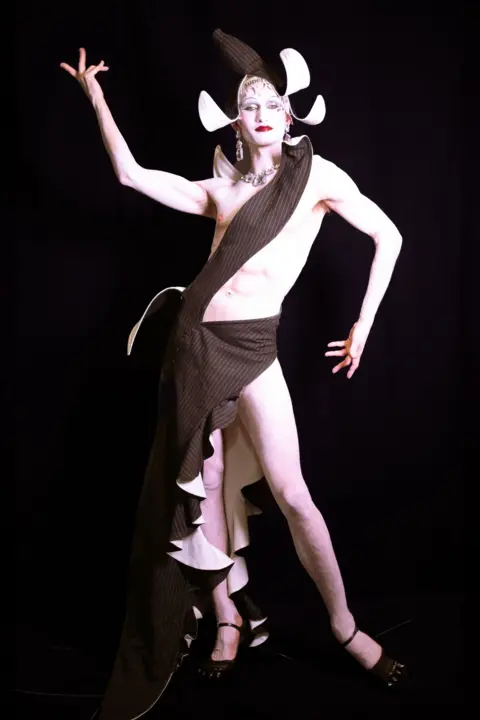 Purple PR/Charles Jeffrey Loverboy
Purple PR/Charles Jeffrey LoverboyBody positivity 'taken a backseat now'
It seem the reality is that designers like Charles are the exception to the rule. As much as activists resist it, industry insiders confirm that body positivity is behind us.
Daniel Mitchell-Jones, co-founder of modelling agency Chapter Management, said: "Yes, things have shifted. In 2020 and 2021, we saw so much more diversity and inclusion on the runways - but body-wise, that's taken a backseat now."
Daniel said when he sends his curve models to castings, they're always pushed, but is often told the brand isn't interested this season.
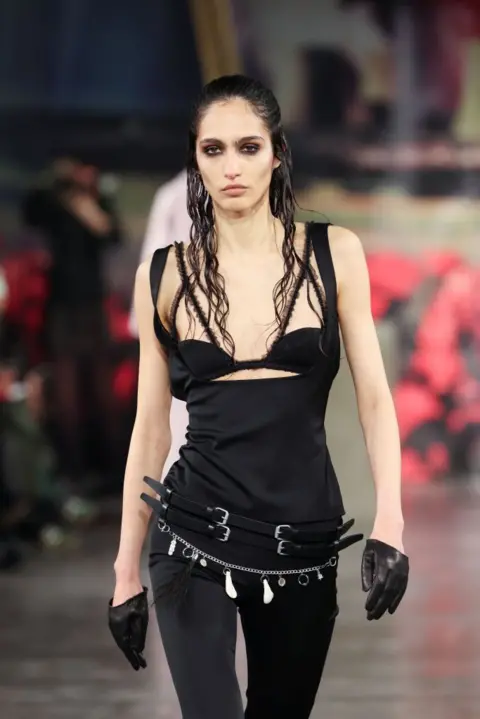 Antoine Flament/Getty Images
Antoine Flament/Getty ImagesPlus-size model Enrika told the BBC that not only are plus-sized models being booked less, their agents are actively struggling to secure work for them.
She explained: "It's not unusual to see campaigns featuring four sample-size models and only one plus-size model. This can make you feel like you're just a token."
Enrika said these brands sometimes often use tactics in campaigns to virtue-signal being inclusive - such as highlighting stretch marks on plus-sized models, whilst airbrushing them on others.
She said: "It sends the message that 'We don't actually think you look as good as the slim models in our skirt. But we accept you because we are such kind-hearted good people, so please give us your hard-earned money', it's nasty work and I don't support it."
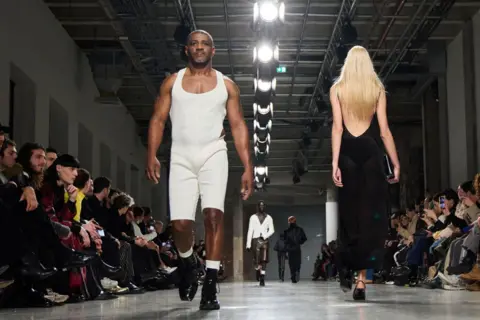 Peter White/Getty Images
Peter White/Getty ImagesIf you want change, change your buying habits. At least, that's what Shaun Beyen, believes: "Everything is consumer-driven".
"It's this kind of vicious circle. Every fashion house gives their version of what they know the customer wants, it's their interpretation and it's up to the consumer."
Gauthier Borsarello said: "There's a famous French saying: 'If people stop producing, people will stop buying.' But the inverse is true. If people stop buying, we stop producing.
"No-one is forcing you to do anything. It's an education of the customer: In a polite way - educate yourself."
And the one benefit of bodies as trends is that the pendulum will eventually swing back. Beyen said: "Nothing is ever gone, especially not in fashion."
